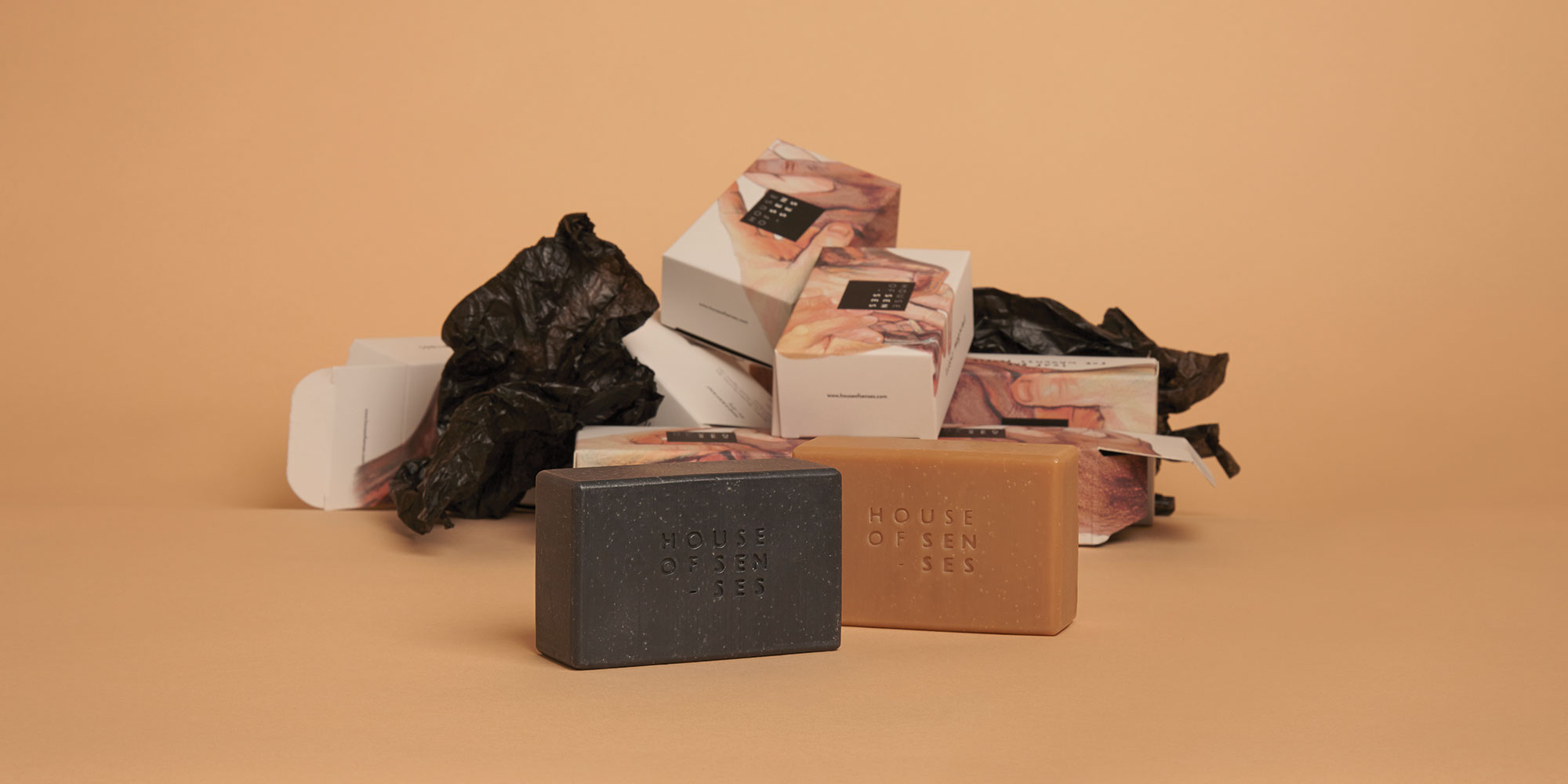Soap Bar Ingredients
Everything in itSoap Bar Ingredients
Type & click enter

Olive Oil
Olive oil contains three main antioxidants: polyphenols, vitamin E, and phytosterols. Antioxidants, when topically applied, may help protect the skin from premature skin aging. Vitamin E partially accounts for the anti-aging advantages of olive oil. It helps restore skin smoothness and protects against ultraviolet light. Hydroxytyrosol, a unique compound found in olive oil, also prevents free radical damage to the skin.
Unlike popular moisturizers which can clog pores and worsen current skin conditions, olive oil penetrates deeply into the skin while providing a cleansing outcome.
Olive oil has a long history of being used as a home remedy for skin care. Egyptians applied it with beeswax as a moisturizer, cleanser, and antibacterial agent since pharaonic times. In ancient Greece, the substance was used during massage, to prevent sports injuries, relieve muscle fatigue, and eliminate lactic acid buildup.
Palm Oil
Palm oil is a vegetable oil derived from the reddish pulp of the fruit of the oil palms. It has a naturally reddish color due to an elevated beta-carotene content. It is not to be confused with coconut oil derived from the kernel of the coconut palm or palm kernel oil derived from the kernel of the same fruit. The differences are in color and saturated fat content: While palm kernel oil and coconut oil are 81% and 86% saturated respectively, palm mesocarp oil is 41% saturated.
Along with coconut oil, palm oil is one of the few highly saturated vegetable fats and is semi-solid at room temperature. Like most plant-based products, palm oil does not contain much cholesterol.
Palm oil contains the hard to find tocotrienols, which are members of the vitamin E family. The common form of vitamin E, tocopherol, has long been used to treat many skin ailments and is found in many anti-aging products. Vitamin E is an antioxidant that helps the skin to fight free radicals that hurt the skin causing fine lines and wrinkles. As a more potent antioxidant than tocopherols, tocotrienols have been proven to be more efficient in preventing aging and damage from free radicals. Used topically, as with tocopherol, tocotrienols can penetrate deep into the skin’s layers to enable healing and protection from the base up.
Coconut Oil
Coconut oil, or copra oil, is an edible oil extracted from the kernel or meat of mature coconuts harvested from the coconut palm. Cocos nucifera, the coconut palm, is thought to be native to the warm climates of Polynesia, Malaysia, and southern Asia. These palm trees bloom and bear fruit throughout the year, growing a new flower spike nearly every month which becomes a cluster of six to twelve nuts. These nuts are the largest seed known to the world, and can take up to a year to fully mature.
Coconut oil is edible and has various applications. Because of its high saturated fat content, it oxidizes slowly and, resists well to rancidification, lasting up to six months at 24 °C (75 °F) without spoiling. It is a safe solution for preventing flaking and dryness and of skin. It also slows the formation of wrinkles and sagging of skin.
Due to its well-known antioxidant properties, coconut oil helps in preventing premature aging. It also helps in treating several skin problems including dermatitis, psoriasis, eczema and other skin issues. Coconut oil can reduce the symptoms linked with psoriasis, eczema as it gives a natural balance to the skin.
Castor Oil
Castor oil is an edible vegetable oil obtained by pressing the seeds of the castor oil plant (Ricinus communis). The common name apparently comes from castoreum, a perfume base made from the dried perineal glands of the beaver (castor in Latin).
Castor oil has been utilized medicinally worldwide for 4,000 years and is featured in Indian and Chinese herbalism. The skin well tolerates it as carrier oil, skin conditioning agent, and as an emulsion stabilizer in cosmetics.
Castor oil is a colorless to yellow liquid with a distinct taste and odor. It is a triglyceride in which about 90 percent of fatty acid chains are ricinoleate. Oleate and linoleates are the other relevant components. It also contains undecylenic acid, a powerful answer to dermal fungus.
Traditional uses of castor oil include therapy of skin disorders, skin problems, skin cuts, burns, sunburns, and abrasions.
Avocado Oil
Avocado oil is a vegetable oil pressed from the fruit of the Persea Americana (avocado). As a food oil, it is used as an ingredient in other dishes, and as a cooking oil. It is valued for its moisturizing and regenerative properties.
The name avocado is derived from the Aztec name “ahuácatl” meaning testicle. It is thought that the implication is either due to the fruit’s shape or the fact that the Aztecs believed it possesses aphrodisiac qualities.
Avocado oil is made cold-pressing the flesh of the avocado. It is necessary to press ten fruits to produce one teaspoon of the thick and rich oil.
Avocado oil adds shine, strength, and condition to hair and skin. It also nourishes the skin and is said to help protect it from ultraviolet rays. The oil contains more than 20% essential unsaturated fatty acids, proteins, lecithin, vitamins A, B, C and E, and potassium. Avocado oil is reputed to be propitious to reduce age spots and the appearance of scars because it has a high content of unsaponifiables that soften and moisturize skin’s upper layer.
Fragrance
Fragrance is a mixture of fragrant essential oils or aroma compounds, solvents and fixatives, used to give a pleasant scent.
Ancient texts and archeological excavations show the use of perfumes in some of the first human civilizations. In the XIX century, modern perfumery began with the commercial synthesis of aroma compounds, which allowed for the composition of perfumes with previously unattainable smells from natural aromatics alone.
Synthetic perfumes last longer than natural fragrances, which fade quickly due to a lack of non-synthetic fixatives. Those fixatives not only give perfume its staying power but also help to release a scent slowly over time, providing greater complexity and richness than virtually any aroma found in nature.
Clays
Clays have been used for centuries for personal care use, and are present in nearly all traditional beauty regimens. Clays clean, exfoliate and invigorate the skin while improving blood circulation. They can absorb excess oils, dirt, and toxins from the skin.
Cosmetic clays are made of different mineral contents, and each clay has a different outcome on the skin. The elevated mineral content of clay rejuvenates the skin while the clay stimulates blood circulation to the skin and exfoliates. Regular use of clay facials serves to remove dead skin cells, improve circulation to the skin, remove dirt from the pores and bring about a smooth, healthy glow. Each type of clay can absorb toxins from the skin, but they differ in their level of absorption.
Clays can be used in facials, body wraps, body powders, and as a natural colorant for soap, creams, lotions, bath salts and more. Clays not only add a natural color to soaps, but they also can anchor scents in soaps and create a luxurious silky lather.
Activated Charcoal
Activated carbon, also known as activated charcoal, is a form of carbon processed to have small, low-volume pores that augment the surface area available for chemical reactions or absorption. Activated is sometimes substituted with active.
Our soaps include charcoal to cleanse deeply and give you a gorgeous glow. Its soft, dry texture exfoliates the skin and helps to rebalance it by absorbing excess oils.


